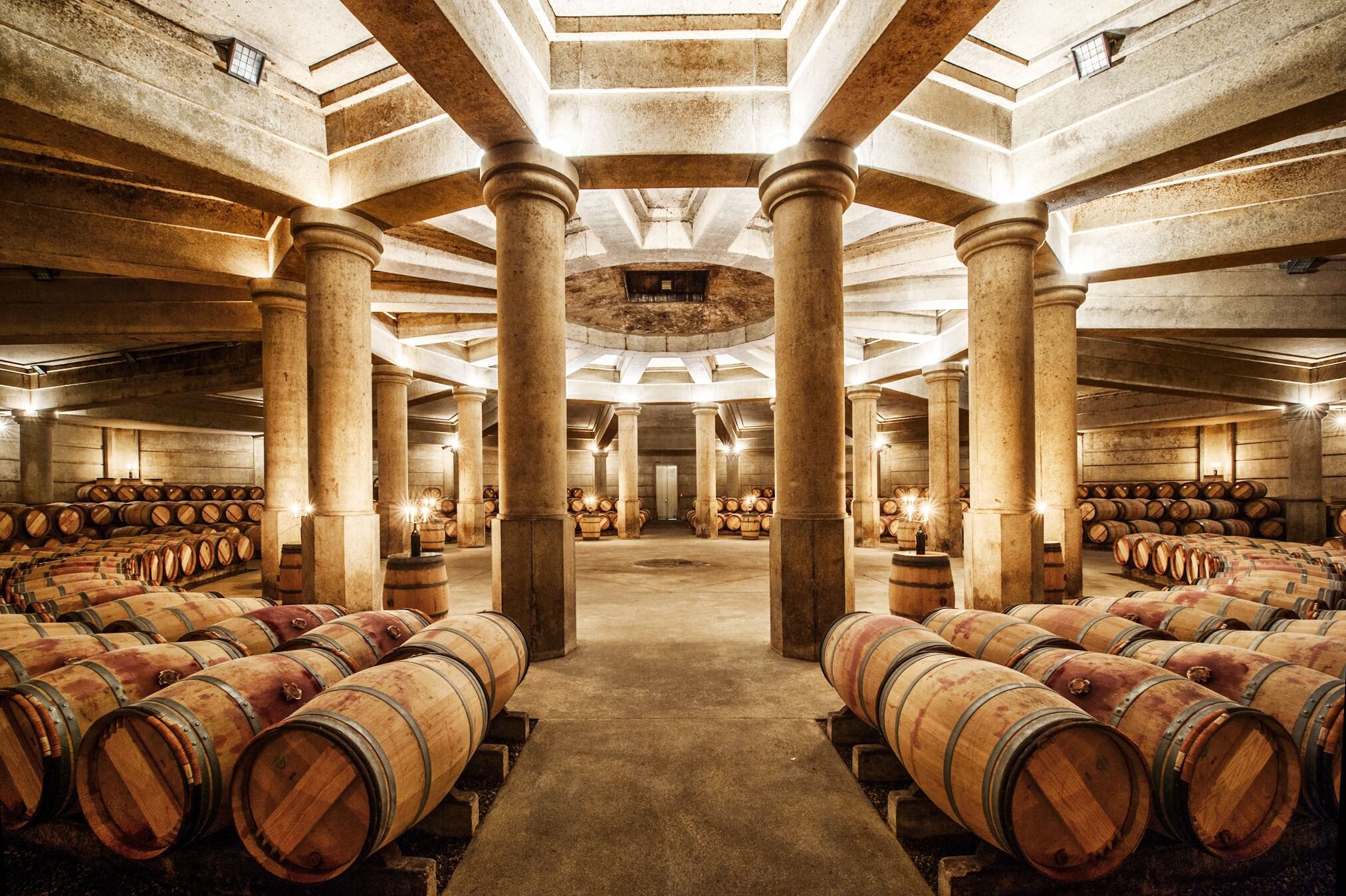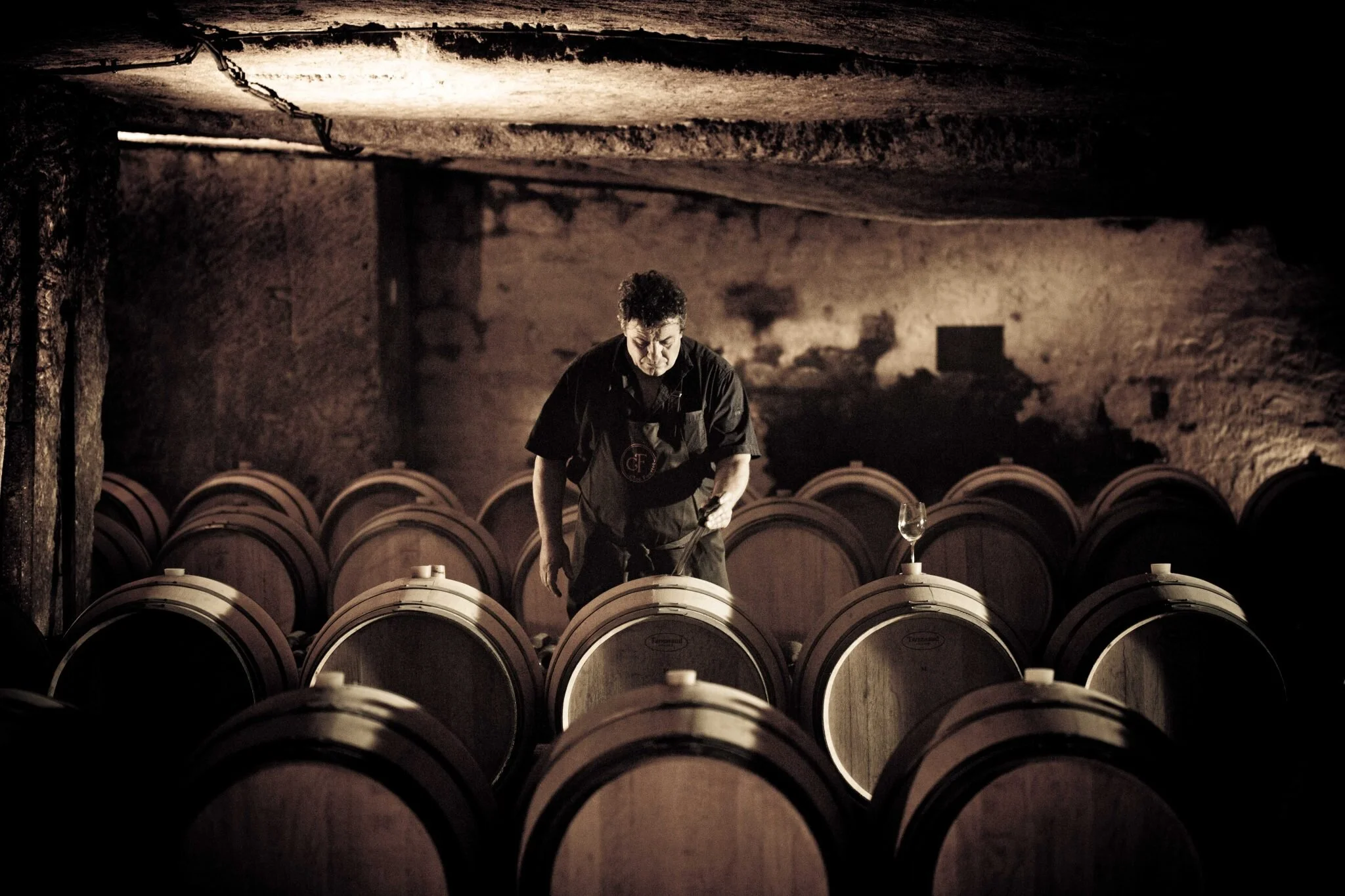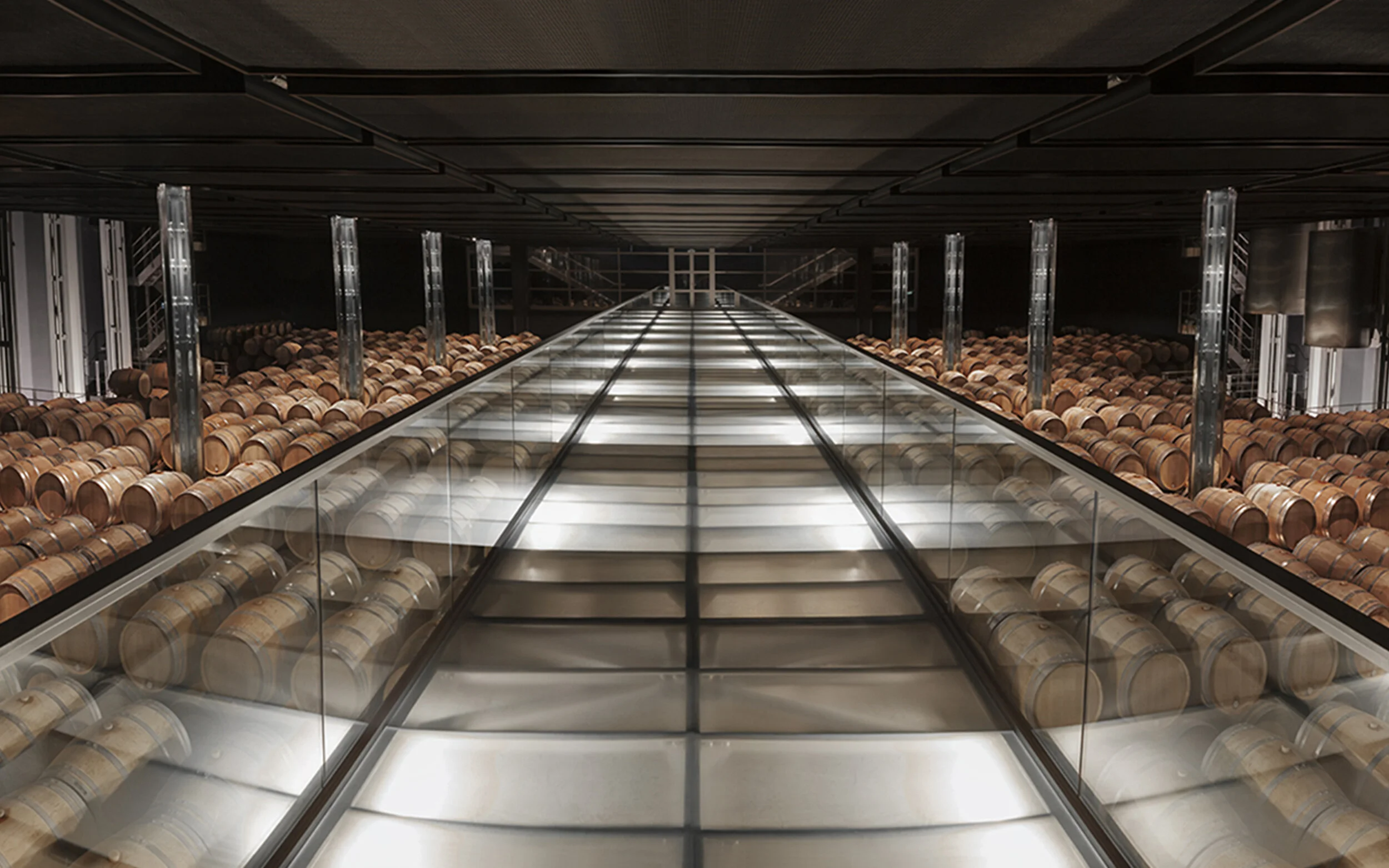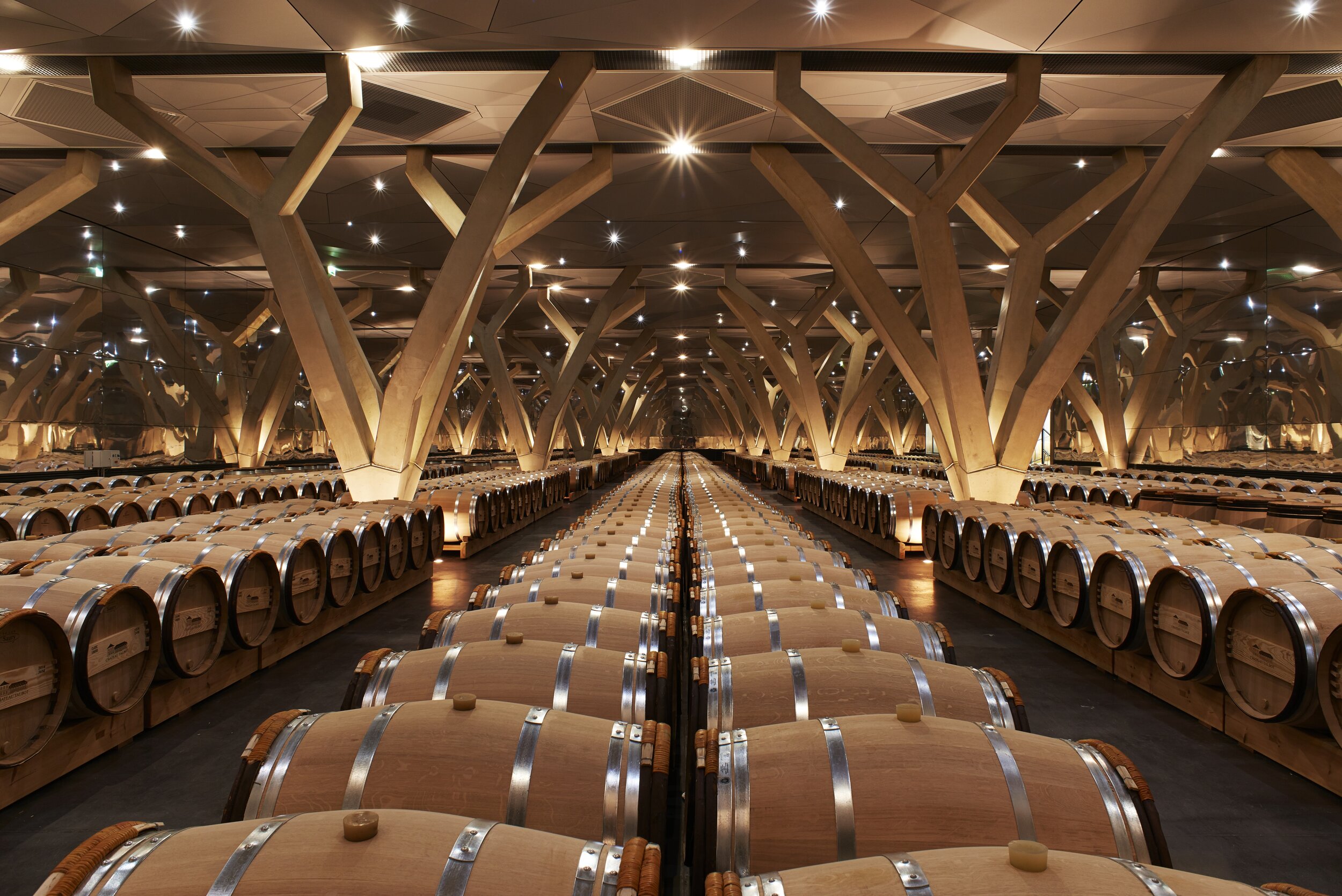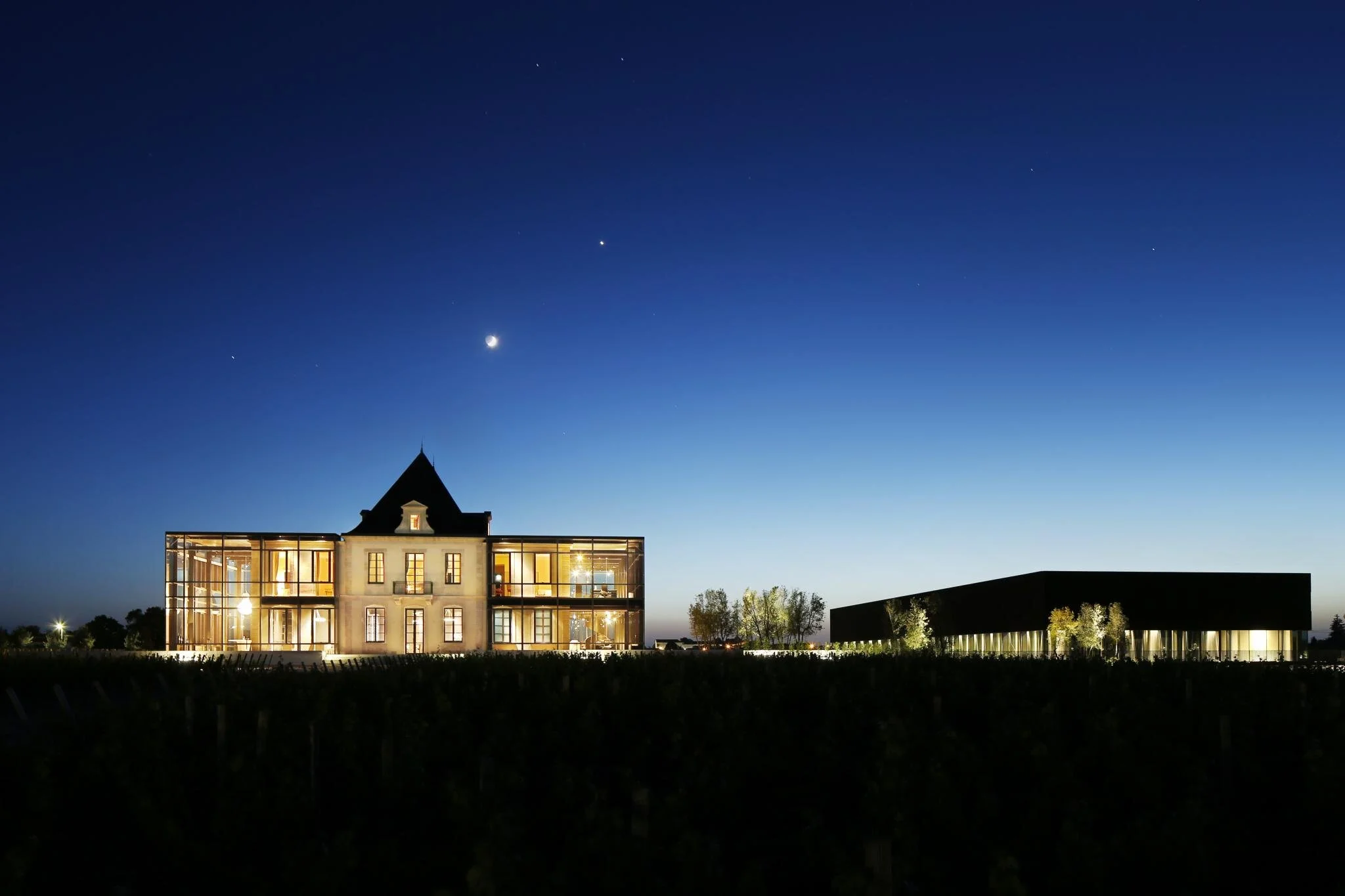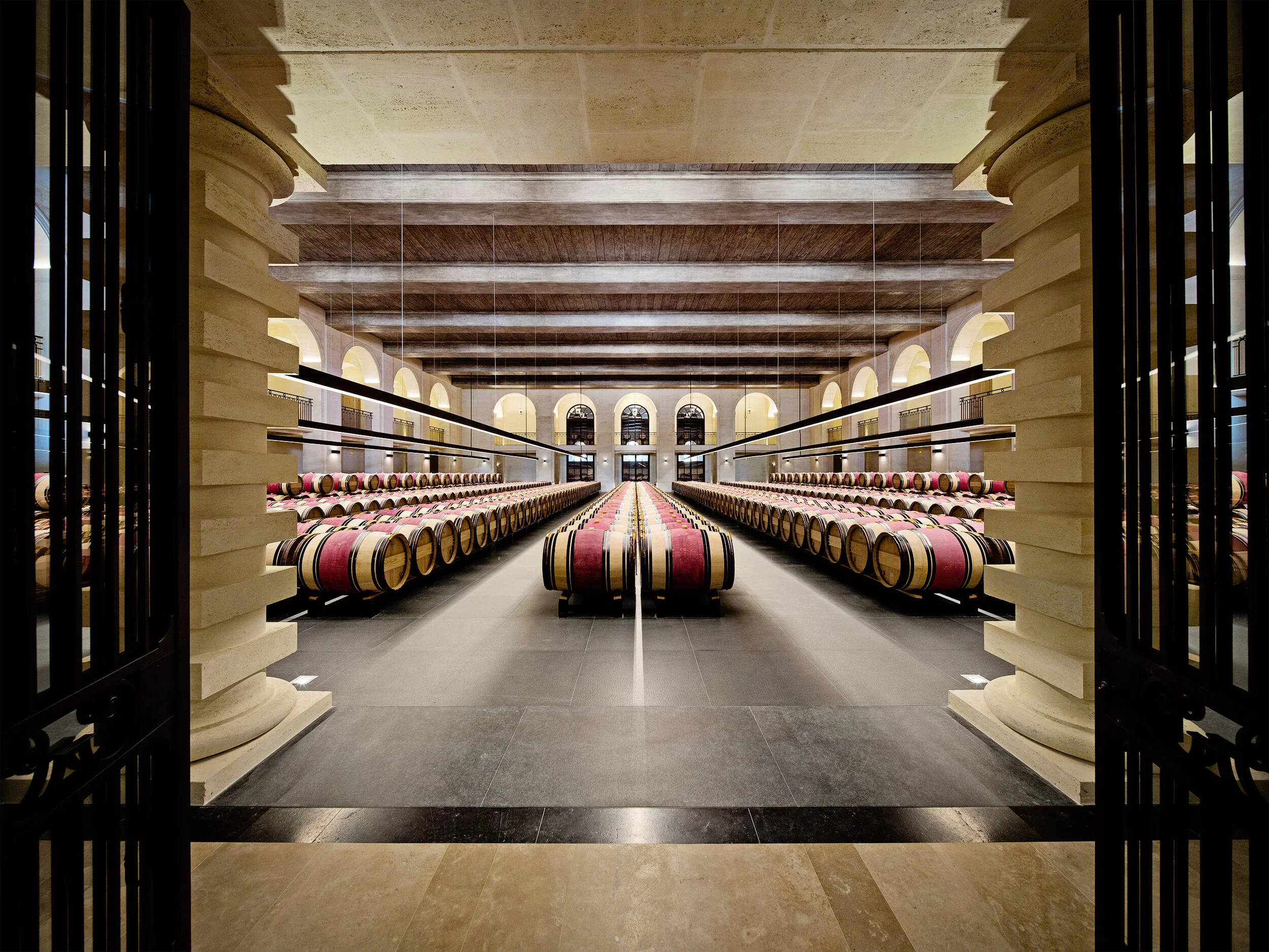The most impressive wine cellars in Bordeaux
Of course, Bordeaux is most famous for its wine, but it is also home to some incredible architecture. In recent years, the very traditional châteaux of Bordeaux have made some modern additions - some striking in their design, others in their sheer size. Others have remained unchanged for centuries, providing an historic and mythical allure of their own. Here is a compilation of some of Bordeaux’s most impressive wine cellars.
Château Lafite Rothschild, Pauillac
Perhaps one of Bordeaux’s most famous cellars is that of the legendary Château Lafite Rothschild in the revered appellation of Pauillac in the Médoc. The unmistakable and quite unique circular cellar room was constructed under the supervision of the architect Ricardo Bofill and inaugurated in 1987. Intended for the ageing of wines in their second year, it is characterized by its unusual octagonal shape and an arch supported by 16 columns. The cellar is also impressive in its size, accommodating up to 2,200 barrels, or about 55,000 cases of wine. The cellar’s amphitheatrical design lends itself perfectly to the musical concerts which have been hosted here during Les Estivales de Musique en Médoc, which showcases emerging young musical talent and the wines of the Médoc.
Clos Fourtet, Saint-Emilion
Above ground, Clos Fourtet is an unassuming estate located at the gates of the medieval village of Saint-Emilion. However below ground you will find something quite remarkable – an extensive 13 hectare subterranean network of limestone caves. Located at a depth of 6 - 12 meters beneath the vineyards, the cool, dark, humid caves offer the optimal conditions to house and age approximately 250 barrels and 100,000 bottles of wine. These seemingly endless passageways and galleries were carved out hundreds of years ago by miners who were sourcing limestone to build the stunning buildings we see in the city of Bordeaux today.
Cos d’Estournel, Saint-Estèphe
Instead of grand reception rooms and accommodations, the main building of Cos d’Estournel houses the winemaking facilities of the estate which is a very different set-up from other Bordeaux wineries. Built under the ultra-modern vat room to minimize environmental impact, the imposing barrel cellar, with its floating glass footbridge, provides a magnificent setting for 1,500 perfectly aligned barrels. The sleek, contemporary lines and contrasting materials are accentuated by clever lighting. But above all, the barrel cellar is a space designed to optimize the ageing process. Air circulation is constantly monitored in the fully insulated room, where temperature is maintained at a maximum of 15°C, and gravity facilitates the transfer of wines from the vat room above to the cellar below, so as to limit unnecessary movement. In a nod to the far-eastern aesthetic of Cos d’Estournel’s original architecture, at the end of the cellar a carved wooden door hides an exotic lair, where the oldest and most precious vintages of Cos d’Estournel age peacefully.
Château Smith Haut Lafitte, Pessac-Léognan
The estate buildings of Château Smith Haut Lafitte are as beautiful as they are unique, offering a strikingly different style of architecture to the traditional châteaux of Bordeaux. This is thanks to owners Daniel and Florence Cathiard who purchased the estate in 1990 and made significant investments to optimize the wine making facilities and elevate the quality of estate’s wines. In addition to the impressive watch tower, cooperage and extensive wine cellars, the winery is also home to the Cathiard’s private wine celllar, accessed by a hidden trap door. With the click of a button, the floor of one of the estate’s more traditional rooms, opens up to reveal a staircase to an exceptional underground lair which abounds with beautiful light, music and imagery. The cellar is home to vintages from as far back as the 1800’s and will undoubtedly leave you with a little wine cellar envy.
Château Les Carmes Haut Brion, Pessac-Léognan
The new facilities of Château Les Carmes Haut Brion, designed by Philippe Starck and Luc Arsène-Henry, opened in 2016 and marked the start of a new era for the château. From the exterior, it almost seems that a submarine is surreally rising out of the tiny River Peugue which runs through the middle of the estate. Blending into the landscape thanks to the reflections that flit across its surface, it is both a feat of technical minimalism and a fitting memorial to Bordeaux’s seafaring history: a place where the sea has made wine’s fortune throughout the world. The central harvest reception area opens up onto the vat room where 1,200 hectoliters of wine are fermented in oak, stainless steel and concrete. Below, where water encircles the structure, some 300 barrels enjoy ideal maturation conditions. Not to be missed on the top floor of the building is a tasting room and terrace offering a beautiful 360 degree panorama of the estate and its vines.
Château Cheval Blanc, Saint-Emilion
Benefitting from the financial means afforded by being part of LVMH group, the cellar of Château Cheval Blanc is perhaps one of the most recognizable in all Bordeaux. Designed by Christian de Portzamparc and inaugurated in June 2011, the sleek exterior features two elegant waves of white concrete that gently rise out of the ground adjacent to the traditional main building of the estate. These facilities are crowned by a stunning garden of wild grasses and lush vegetation which lifts the eye to the sky. Inside, the cellar lets in natural light and has a pure, simple yet striking design. The 6,000 m² cellar houses a state-of-the-art winemaking facility including a bright and spacious vat room with fifty-two vats arranged in six rows. Built in Italy, these concrete vats come in nine different sizes, from 20 to 110 hectoliters.
Château Talbot, Saint-Julien
Unique in its conception and built to near perfection, Château Talbot’s new cellar, designed by Bordeaux architects Nairac and Vacheyrout, is certainly one of the most original. Finished in 2012, the cellar covers 1,500 square meters and has earned itself a place among the greatest examples of wine architecture in Bordeaux, through both its scale and design. Stylistically, the interior can be interpreted in two ways. It is, at once, a gigantic forest of tens of concrete trees that link the floor to the seven-meter high ceiling. On another level, the design resembles a vine pruned in the old gobelet style. Striking to look at, it also hides the state of the art machinery that ensures optimal conditions are maintained. No fewer than 1,800 barrels are lined up in the cool, dimly lit cellar, maintained at 17°C, where the estate’s wine matures for 18 months.
Château Pédesclaux, Pauillac
Despite boasting neighbors such as Château Latour, Lafite Rothschild, and Mouton Rothschild, Château Pédesclaux wallowed in the shadows of its famous neighbors for many years. Today, under the ownership of Jacky and Françoise Lorenzetti, Château Pédesclaux is finally garnering the attention it deserves. Over the last decade, Lorenzetti has made huge investments in the property including a bold new redesign of the facilities by the talented Jean-Michel Wilmotte. The result features cutting edge winemaking technology and an incredible contrast of traditional architecture and contemporary design. A visit to the beautiful Château Pédesclaux should be on everyone’s bucket list.
Château Beychevelle, Saint-Julien
Château Beychevelle was originally constructed in 1565 and has seen numerous owners, each of whom have left their mark on the estate. Legend has it that while the first Duke of Épernon was owner, the reputation of this great French admiral was such that as boats passed in front of his estate, they would lower their sails to show their allegiance. This deep mark of respect gave rise to the château’s emblem, a ship with a griffon-shaped prow; its name in Gascon, 'bêcha vêla', meaning 'baisse voile', which translates to 'lower the sails', and later became Beychevelle. It was this that inspired the architect Arnaud Boulain and his design of the modern wine making facilities at Beychevelle today which were completed in 2016 at a cost of 20 million euros. The impressive design incorporates numerous nautical nods such as undulating waves and billowing sails but it is the floor to ceiling glass walls which are one of the winery’s most striking features, offering visitors both inside and out a unique perspective on the estate.
Château Montrose, Saint-Estèphe
In the Médoc appellation of Saint-Estèphe one will find Château Montrose, where a spectacular rehabilitation project resulted in the harmonious combination of cutting-edge environmental and winemaking technology and architectural beauty. The main barrel hall, where the first wine of Château Montrose is aged, was the centerpiece of the renovation project. Under an 11-metre-high ceiling, with precisely controlled humidity and temperature and in an atmosphere of almost monastic silence, the 1,000-m² hall welcomed its first vintage, Château Montrose 2013, in 2014. It is a sight to behold.
